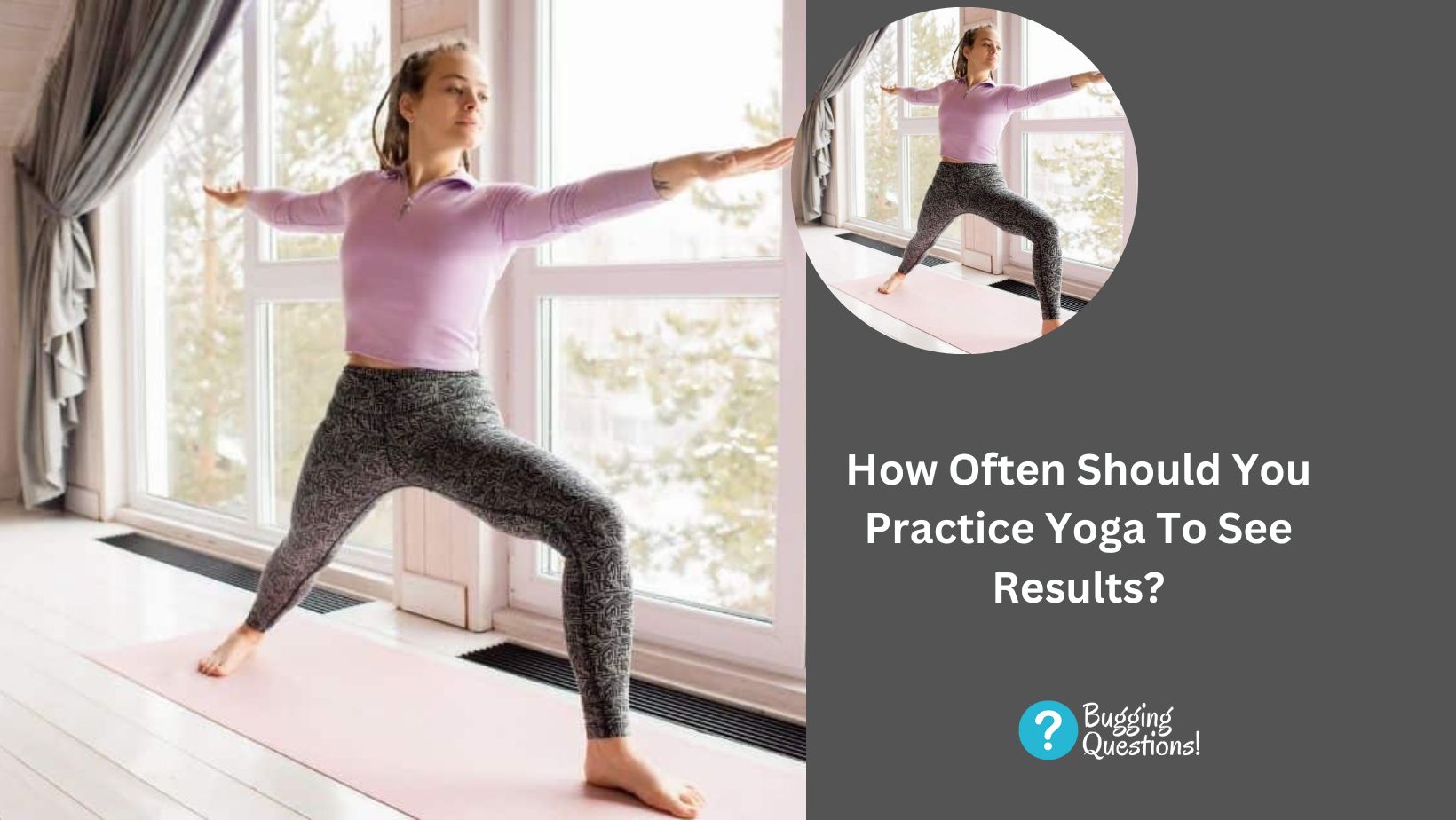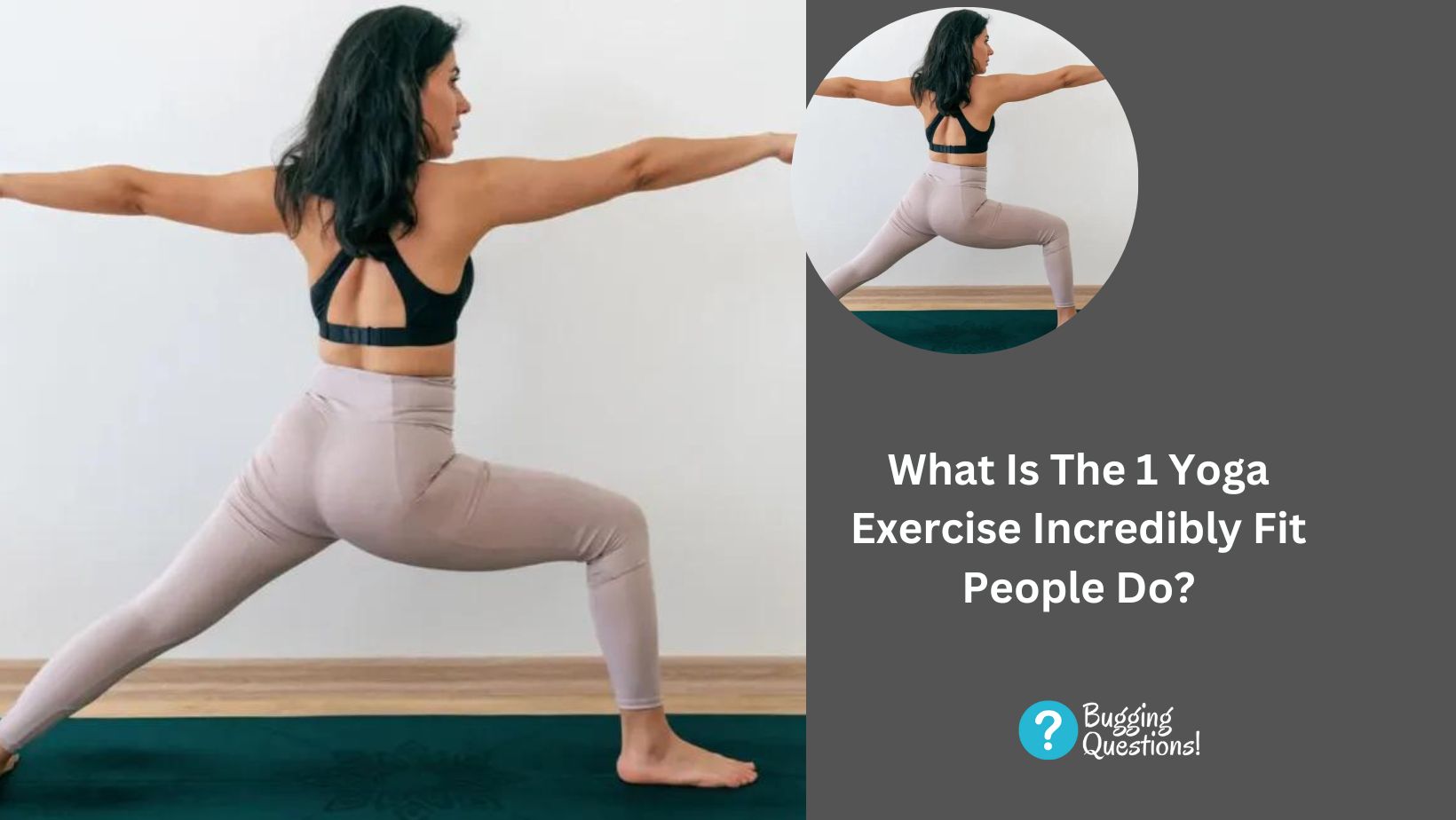Let’s find out ‘How Often Should You Practice Yoga To See Results?’ Yoga is a mental and physical exercise. Most of us anticipate outcomes like being able to touch your toes, having greater range of motion in your back, or loosening constrictive hips and shoulders.
Along the road, you could also find that it helps you feel and sleep better, reduce stress, and recover more quickly. No matter if your primary objective is to loosen your hamstrings, you will undoubtedly gain in other areas as well because these benefits go hand in hand. It’s not a straightforward equation that says “the more often you practice Yoga, the faster you receive benefits,” but how frequently you practice yoga may impact how quickly you get there.

Find Your Frequency
For consistent improvement, most teachers advise us to practice three to five times a week. According to a significant research of yoga practitioners, those who practice at least five times per week have the best improvements in their general health, sleep, level of weariness, and sense of wellbeing. The study discovered that maintaining a regular practice is more significant than anything else in terms of personal rewards, thus beginners may get just as much from two weekly sessions as more-advanced students from practicing virtually every day. The key is making yoga practice a consistent part of your weekly routine.
What does it matter if you can only practice once a week? While you will undoubtedly gain from it, the benefits might not stay as long as they would if you practiced two or three times a week.
On the other hand, you can practice every day if you so choose. Just be sure to mix up your practice sessions to avoid putting any strain on your ligaments, joints, or muscles. Build up your daily practice gradually if you don’t already have one and want to start so your body has time to adjust. Doing too much too quickly could result in injuries and impede your progress—exactly the opposite of what yoga is supposed to do for you!
The secret is to discover a practice routine that works for you, fits into your schedule, and feels natural to your body. Making a commitment to practice frequently (for instance, three times per week) for a month or two, and then reevaluating, may be useful. This gives you enough time to experience the results and determine whether it is effective for you. If not, alter your schedule!

How Long Or Short Should Your Practice Be?
You decide how long to practice; most people do so for between 15 and 60 minutes. No action is right or bad. It’s totally great if you can just squeeze in a quick 10-15 minute practice before work or right after a workout. Try our morning routine of 15 minutes! Alternately, try this easy 3-exercise mobility regimen to start your day. It would be fantastic if you could then find another window of time in your day for a little extra practice.
Long yoga sessions are on the opposite end of the spectrum. You could occasionally feel the need to do your own practice and include every pose. That might be beneficial occasionally, but you risk doing too much and taxing your joints, so proceed with caution. Don’t forget to pay attention to your alignment and breathe deeply as you move through your practice; it’s always preferable to perform fewer poses correctly than many ineffectively. A long practice has the advantage of giving you ample of time for each position and allowing you to take a longer relaxation at the conclusion, which is healthy for both your body and mind.
No Pain No Gain?
Yoga practitioners do suffer injuries as a result of our minds and egos getting in the way. You run the risk of tearing a muscle or dislocating a joint if you push yourself too hard too soon. You run the risk of developing a repetitive strain injury if you suddenly decide to start undertaking daily long and rigorous practices. A little discomfort is acceptable, especially if it’s light and dull, but severe discomfort and acute or stabbing pain are strong indicators that you should dial things back.
Use a block to help you reach the ground in standing folds if you can’t, or a belt or scarf to help you reach your toes in seated or reclined positions if you can’t. No matter what the ‘perfect’ stance is, if the instructor gives options, choose the one that is best for you. Adjusting your practice is far preferable to pushing through discomfort or giving up entirely.
Discipline is a crucial component of yoga practice, and that includes learning how to work with yourself. Rather than continuously pushing yourself to the limit, you should learn what your body can handle and when to stop, rather than letting your ego take control.

What If You Don’t Feel In The Mood?
We can feel completely unmotivated. That is typical. Sometimes you need to take a break to allow your body to heal, and other times we’re just being lazy. Make a pact with yourself to practice yoga for 10 minutes, and if you still feel like today isn’t the day, quit and don’t be hard on yourself. You’ll probably want to keep practicing after a few minutes and will be happy you started. Because exercise increases blood circulation, more oxygen and nutrients are delivered to your tissues, resulting in increased energy.
In one trial, moderate- or low-intensity exercise programs were given to young people who felt persistent weariness. Despite regularly exercising, the participants reported feeling much less worn out at the end of the program. Higher gains in energy levels were shown in the low-intensity exercise group, and yoga can do the same for you!
How Do You Know What’s Right For You?
If you utilize yoga as a supplement to your athletic training, you’ll likely be able to determine if it’s best for you to practice yoga before, after, on recuperation days, or according to a set schedule each week. Finding a pattern that works for you could need a bit of trial and error. Some people like to practice in the morning, while others prefer to practice later in the day. This also depends on your schedule and goals; if you have problems starting the day, some invigorating morning yoga can be precisely what you need.
As morning schedules are least disrupted, mornings are typically the greatest time of day to establish habits. Create a relaxing nighttime yoga routine if you have trouble unwinding and drifting off to sleep. It’s rare for someone to do it perfect the first time, therefore experimenting is necessary and not simply ok.
Try to practice yoga at least three times a week for the best benefits. If you wish to practice yoga daily, make sure to pick a light practice at least once a week. Practicing more than five times a week may not have any additional benefits. Because one day per week ought to be set out for rest and recuperation. Other than that, all you need to do is be patient, and you’ll see consistent improvement!









